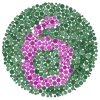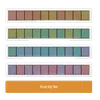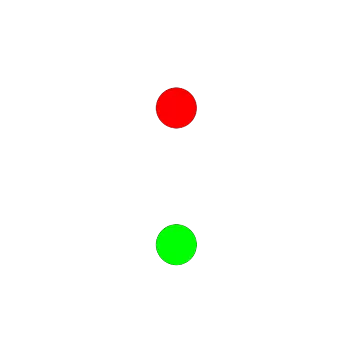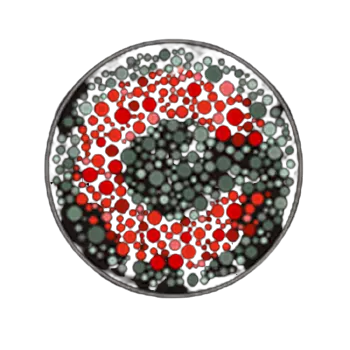Ishihara Test
Take our free online Ishihara color blindness test to check your color vision and identify any color vision deficiencies in minutes.

- The test shows you various Ishihara plates, each displaying numbers that you need to identify correctly to pass this test.
- Remove any glasses with colored lenses. This test requires you to use your naked eye for accurate results.
- Increase your screen brightness to a high level. Dim lighting can affect your ability to see colors accurately.
- For better results, take this test on a larger screen, like a tablet or laptop.
What is Ishihara Test
The Ishihara color blindness test is one of the most common color blind tests globally. Ishihara test mainly detects red-green color blindness.
There are 38 plates in the Ishihara blind test, where each plate contains dots of different sizes and colors. All dots on plates are arranged in specific patterns to form numbers or figures that people with normal color vision can see.
People with color deficiency won't be able to see the numbers of figures on these colored plates. Some The Ishihara plates are visible only to people suffering from color vision deficiency and invisible to those with normal color vision.
The standard Ishihara test has 36 colored plates, but there is more Ishihara test with 10, 14, or 24 plates.
Types of colored plates in the Ishihara test
-
Demonstration plate - The demonstration plate is the first plate in the Ishihara test with the number"12" and can be"16". This demonstration plate is seen by all individuals having normal color vision or impaired color vision. It is only used for demonstration purposes and not considered in making a score for screening purposes.
-
Transformation plates - People with normal color vision can distinguish different figures or numbers from people suffering from color vision defects.
-
Vanishing plates - Only people with normal color vision can see vanishing plates. i.e., Figures or numbers on the plates can ot seen by color vision defective people.
-
Hidden digit plates - People with color vision defects can only see figures and numbers on these plates.
-
Diagnostic plates - These plates help diagnose the type of color vision defect protanopia (red deficiency) or deuteranopia (green deficiency) and its severity.






